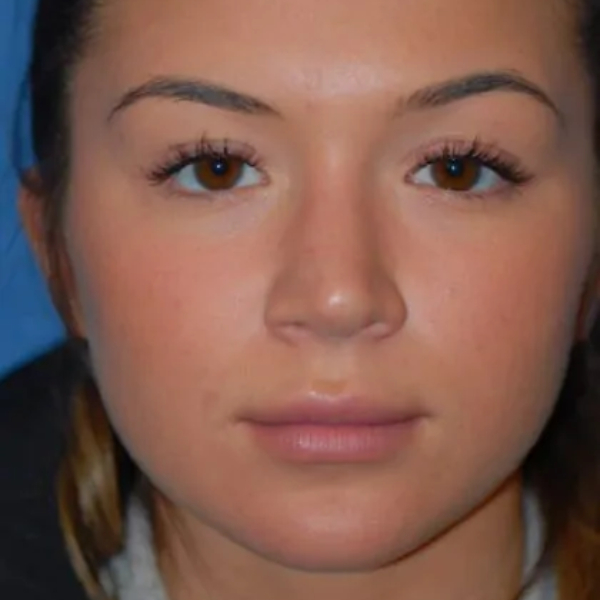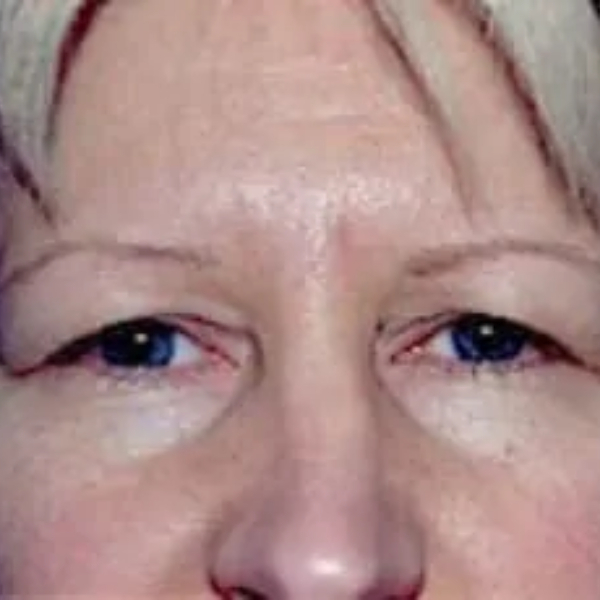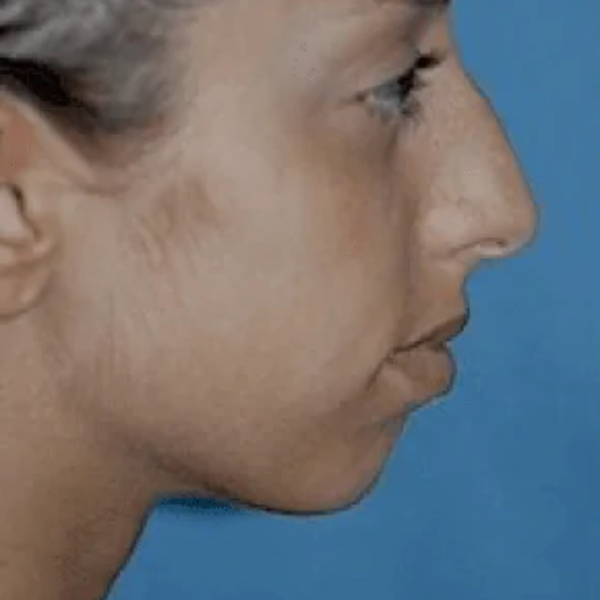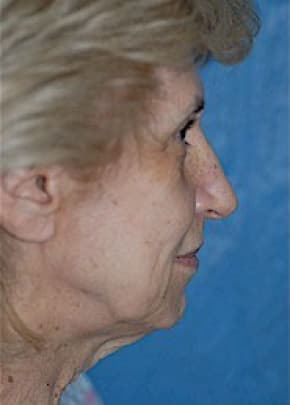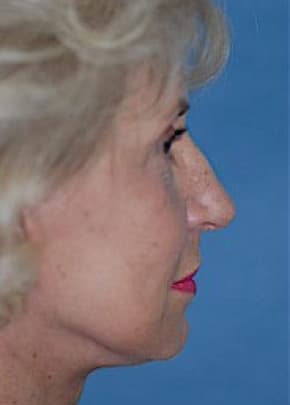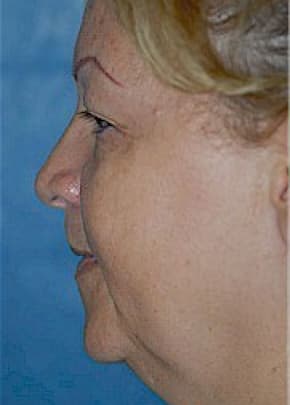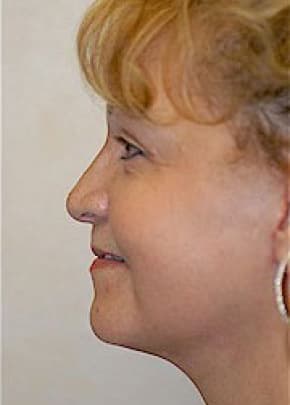Facelift
Consultations offered at our four convenient locations in Edison, Marlboro, Warren and West Orange, NJ

The facelift procedure, or rhytidectomy, is a procedure designed to reposition the underlying tissue in the face to create a younger, more rejuvenated appearance. The rhytidectomy is one of the most commonly performed cosmetic surgical procedures in the country; in 2023, there was an 8% increase in the number of facelift procedures being performed. (1) The facelift procedure can address the signs of aging in the eyes and cheeks, enhancing one’s appearance for a more youthful look.
Dr. Andrew Miller is an award-winning, board-certified plastic surgeon at Associates of Plastic Surgery in New Jersey. He was recognized by the American Board of Facial Plastic and Reconstructive Surgery in facial plastics with a specialization in facial plastic surgery. Through the use of advanced techniques and skills picked up through his many years of experience, Dr. Miller can help you look and feel like your best self.
To schedule your facelift at any one of our convenient New Jersey locations, call the location closest to you or fill out our contact form and we will get back to you as soon as possible.
Contents
Before and After Photos
About Facelifts
There are multiple types of facelifts to suit a variety of different treatment needs. Each technique addresses different areas of concern with specialized techniques to enhance your appearance. In 2023, more than 78,000 patients received a facelift to achieve effective facial rejuvenation. (2)
Deep Plane Facelift
Deep plane facelifts have gained in popularity over traditional facelifts for their ability to achieve incredible, consistent, and long-lasting results and a more youthful appearance. This outpatient procedure greatly reduces the aged or drooping look caused by loose skin on the face and neck by reshaping and tightening the underlying musculature. This procedure is ideal for patients with severe facial sagging and skin laxity. It’s also ideal for patients who want the longest-lasting results (of 10 to 15 years), and, incidentally, is better for patients who smoke (though smokers must still be able to quit for at least 30 days before and after the procedure).
Mini Facelift (S-Lift Or Weekend Lift)
The mini facelift uses shorter incisions and requires less recovery time. However, we have found they are only truly useful for a small number of patients. A full, deep-plane facelift will give more dramatic and longer-lasting results. If you have significant jowls or a heavy neck, our mini facelift will not be your best option. For a lighter but still dramatic refresh and rejuvenation, this procedure will work wonders on the midface and lower face, and signs of premature aging.
SMAS Facelift (Superficial Musculo-Aponerutotic System)
SMAS refers to a system of muscles and connective tissue deep in the subcutaneous fat around the mid and lower face. This facelift targets the deeper muscle and connective tissue to create a tighter and more youthful look. This kind of facelift is recommended for patients with deeper wrinkles and jowls.
Lower Facelift (Neck Lift)
Patients who suffer from significant sagging skin on the neck will benefit from a neck lift (platysmaplasty). A neck lift focuses solely on the neck and involves less recovery time than a full facelift. A neck lift can also reduce the appearance of neck banding, which is when the muscles of the neck become thicker and more visible with age.
Minimally-Invasive Facelift (Cheek Lift)
If your cheeks are sagging and you want subtle rejuvenation without a full surgery, a cheek lift (also called a thread lift) is a great choice. Thread lifts involve long stitches placed under the skin in order to lift and anchor sagging tissue. Local anesthesia is used and the procedure can be combined with fat injection, upper eyelid surgery or a chemical peel in order to provide a rejuvenated appearance. We offer a variety of cheek lifts tailored to different concerns.
No matter what aesthetic concern you’re looking to address, Associates of Plastic Surgery are likely to have a treatment option for you. Dr. Miller provides each of his patients with a highly personalized experience, taking into consideration factors like underlying anatomy, facial features, and personal goals.
To learn more about other facial treatment options available, check out Dr. Miller’s blog!
Benefits of a Facelift
There are many benefits to a facelift. A facelift procedure can help reduce wrinkles and deep folds in the face, reducing signs of aging. A facelift can enhance the definition of the cheeks and jaw, revitalizing your appearance. Dr. Miller fully customizes each procedure to suit each patient’s features and aesthetic goals. Dr. Miller utilizes advanced techniques that create natural, long-lasting results that can be seen for up to 10 years.
Candidates and Consultation
The ideal candidates for a facelift are those who are experiencing signs and symptoms of aging, such as sagging skin in the face and neck. All candidates should also have good overall health without any underlying medical conditions that may impact the recovery process.
Each patient is required to book a personal consultation at Associates in Plastic Surgery. At this personal consultation, each patient will be able to meet with Dr. Miller to discuss their goals and the facelift procedure. The cost of the treatment as well as a set of post-operative and preparation instructions will be given to each patient. This will also be a good time to discuss any possible questions or concerns.
Patients will also undergo a medical examination during which Dr. Miller will evaluate the condition of the skin. After listening to your concerns and evaluating the treatment area, Dr. Miller will be able to start customizing your procedure to help you reach your aesthetic goals.
To book your personal consultation with Dr. Miller at any of our locations in New Jersey, call (732) 548-3200, or fill out our contact form and we will get back to you as soon as possible.
Preparation
Prior to your procedure, patients should arrange transportation to and from the procedure. Patients should also arrange for a trusted individual to assist them around the house during the early phases of recovery. Patients who smoke should be prepared to quit smoking before the procedure and avoid smoking until approved by Dr. Miller. It is also important to avoid excessive sun exposure, as any damage to the treatment area could cause Dr. Miller to postpone your procedure.
Procedure
Anesthesia is administered during the facelift procedure to maximize patient comfort. After the anesthesia has taken effect, Dr. Miller will make incisions using techniques designed to minimize any visible scarring. (3) He will then remove and reposition excess skin to create a natural contour and younger look. After making the necessary adjustments, Dr. Miller will close the incisions. The procedure can take anywhere from 2-6 hours, depending on the type of facelift Dr. Miller performs.
Recovery
During recovery from a facelift, patients may experience some discomfort, tightness, and swelling in the treated areas. Dr. Miller will prescribe pain medications to help minimize any discomfort in the first few days after your procedure. Swelling and bruising will substantially subside after 2-3 days, but we recommend that patients avoid any strenuous activities or heavy lifting until Dr. Miller says it is okay to do so.
After 2-3 weeks, most patients find that the majority of the swelling has decreased. We recommend avoiding the use of makeup while your skin continues to heal.
Patients can return to most normal activities around 4-6 weeks after the procedure, with Dr. Miller’s approval. By this point, the bruising and swelling will have subsided and results may be more apparent. The full recovery period can last between 2-3 months on average.
Results

After a facelift procedure, patients can enjoy a smoother facial contour, more defined features, and an overall more youthful appearance. The results of a facelift can last up to 10 years, but you can help prolong your results by protecting your skin and using SPF. UV exposure contributes to up to 80% of facial aging. (4)
Cost of a Facelift in New Jersey
The cost of each facelift can vary. The total cost of your facelift will be discussed at your personal consultation with Dr. Miller. No matter what the procedure, patients can be assured they are getting the best service in the greater New Jersey area.
We have multiple locations throughout the greater New Jersey area to help people across the state achieve their aesthetic goals.
To schedule your consultation online, please fill out our contact form.
References
- American Society of Plastic Surgeons ® Endorsed Partner.; 2023. https://www.plasticsurgery.org/documents/news/statistics/2023/plastic-surgery-statistics-report-2023.pdf
- Raggio BS, Patel BC. Deep Plane Facelift. PubMed. Published 2021. https://www.ncbi.nlm.nih.gov/books/NBK545277/
- Lamb J. Volume Rejuvenation of the Face. Missouri Medicine. 2024;107(3):198. Accessed December 10, 2024. https://pmc.ncbi.nlm.nih.gov/articles/PMC6188315/
- Zhang S, Duan E. Fighting against Skin Aging. Cell Transplantation. 2018;27(5):729-738. doi:https://doi.org/10.1177/0963689717725755

